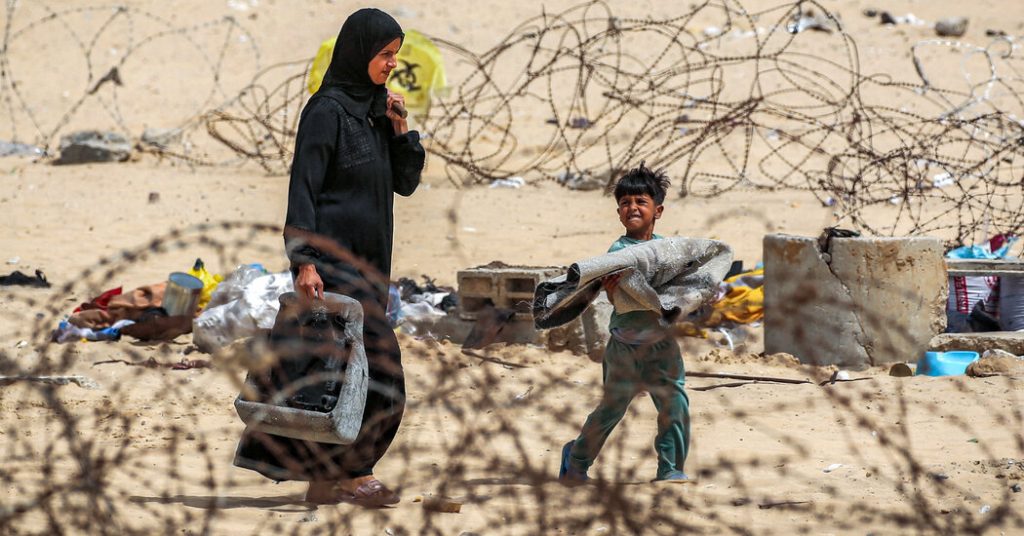With around 300,000 Palestinians in southern and northern Gaza being forced to flee due to new and expanded evacuation orders by Israel, a significant humanitarian crisis is unfolding in the region. Many of those forced to leave are unsure of where to find secure shelter in an area that has been devastated by war. The city of Rafah, located at Gaza’s southernmost tip, has been a focal point of the evacuation orders, with over a million Gazans gathering there after fleeing Israeli bombardment from other parts of the region over the past several months. This has raised fears of a potential invasion of Rafah by the Israeli military, which has been condemned by international aid groups and various countries.
The United Nations agency that aids Palestinians, UNRWA, has reported that some 150,000 people have already fled Rafah over the past six days, with more expected to follow. The situation is dire, with a lack of clarity on where displaced individuals can go for safety. The European Council President, Charles Michel, has criticized the expanded evacuation orders, calling them unacceptable. The Israeli military has intensified its operations in eastern Rafah, targeting Hamas, but the majority of casualties have been women and children, according to local health officials.
Most of Gaza’s 2.2 million residents have been forced to leave their homes multiple times throughout the war, leading to overcrowded living conditions in ramshackle tents, classrooms, and apartments. The Israeli military has urged displaced individuals in eastern Rafah to evacuate to a humanitarian area in Al-Mawasi, a coastal region north of Rafah. However, the United Nations has emphasized that Al-Mawasi is neither safe nor equipped to accommodate the hundreds of thousands of Palestinians already displaced by the conflict. The situation is causing widespread fear, confusion, and anxiety among the displaced population.
Despite ongoing bombardments in Rafah, Israeli forces have also returned to other areas of northern Gaza like Beit Hanoun and Zeitoun to address renewed militant activity. The city of Jabaliya in northern Gaza was ordered to evacuate ahead of a planned Israeli operation. The resurgence of Hamas in these areas has been attributed to Israel’s failure to establish an alternative government, leaving a vacuum that creates an ideal environment for insurgency. The lack of a viable alternative to Hamas and repeated attempts to establish one have proven unsuccessful according to Israeli military analysts.
The experiences of individuals like Razan al-Sa’eedi, an 18-year-old university student living in Rafah, highlight the challenges faced by displaced Palestinians. Al-Sa’eedi and her family were forced to flee a UNRWA school where they had been living after their transportation was destroyed in an Israeli missile strike. They embarked on a treacherous journey on foot to find refuge, eventually reaching Al Aqsa University in Khan Younis. The living conditions at the university were dire, with limited space and resources for the increasing number of displaced families. The ongoing conflict continues to take a heavy toll on the civilian population, leaving many without a secure place to call home.


